Fly and Photos by Loren Williams
In the east, the Grannom Caddis (Brachycentrus americanus) is one of the earliest and densest hatches we see. I can recall numerous occasions on central Pennsylvania's Big Fishing Creek when the hatch would create dangerous driving conditions through the "Narrows" section of the stream due to the blanket hatch.
This moderate sized critter with it's dark body and wings is sometimes called a Black Caddis. Interestingly, when in flight the bug looks rather pale and moth like as do most caddis species, but at rest it truly is very dark.
The bug typically shows itself in the middle to last half of April on spring influenced streams and a bit later on freestone streams.
Imitating the adult can be important early in the hatch, but when the hatch is fully underway a surface imitation can be an exercise in frustration simply because so many naturals litter the surface. Oftentimes it is far better to fish subsurface with pupa or emerger imitation. I have included a photo of a suitable wet fly at the end of this tutorial.
If you elect to imitate the adult caddisfly of this species, two effective patterns are the trusty Elk Hair Caddis created by Al Troth decades ago, and the newer variation of that theme called the X-Caddis. This tutorial will show you how to tie the X-Caddis to match this hatch. Note that the X-Caddis can imitate any caddis species by changing the size and color.
Materials
Hook: Partridge SLD #12-#14
Thread: Black
Tail: Sparse Copper Antron
Body: Very dark chocolate dubbing
Wing: Dark mottled deer hair
Head: Trimmed hair butts
Click photos to enlarge!

|
Place the hook in your vise. |
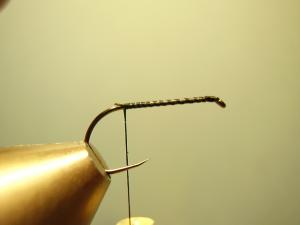
|
Start your thread behind the hook eye and lay a thread base to the rear, ending just before the bend. |
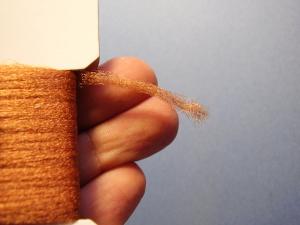
|
Select some copper or brown antron yarn. |
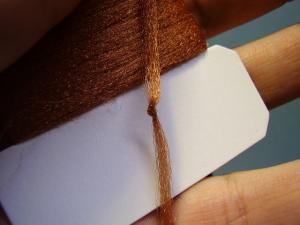
|
Tie an overhand knot in the yarn, leaving a few inches of tag end. This will allow you to split the yarn easier while reducing waste. |
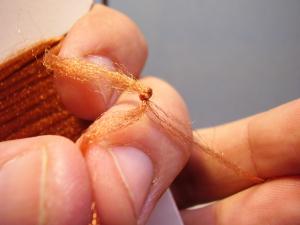
|
Split the tag end of the knotted antron into rough thirds. |

|
Clip off one of the sections. |
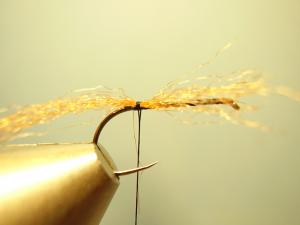
|
Secure it at the rear. |
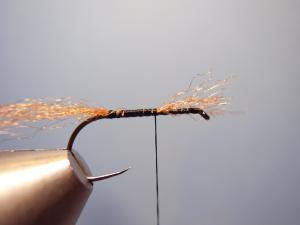
|
Bind it to the middle. |

|
Clip the excess. This will help build the reverse taper of caddisfly bodies. Next, clip the tail to be about equal to the length of the hook. |
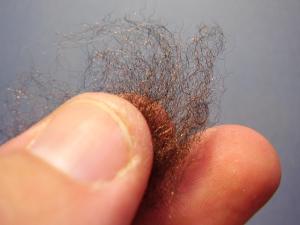
|
Select some very dark chocolate dubbing. Shown is Fly Rite synthetic dubbing that I prefer. |
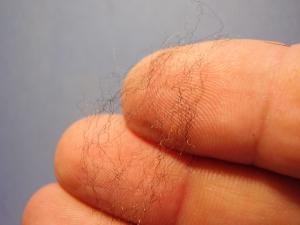
|
Pull out a few strands of dubbing. If you do use synthetic dubbing, keep the strands long and parallel to each other. |
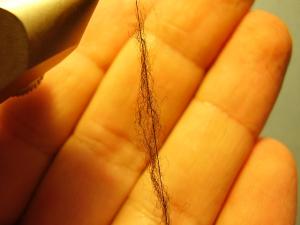
|
Touch the dubbing to the thread to get it started, keeping the dubbing fibers parallel to the thread. |
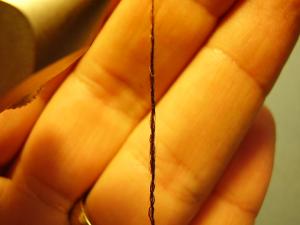
|
Secure the dubbing evenly by twisting the dubbing onto the thread using forceful and unidirectional pressure. |
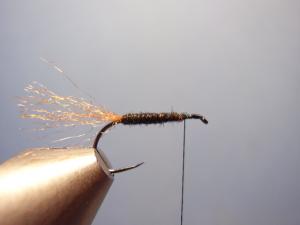
|
Build a pleasant, revered taper body. |
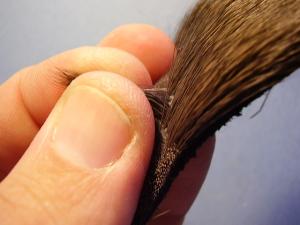
|
Select some dark mottled deer hair and separate a healthy pinch. Clip it close to the hide. |
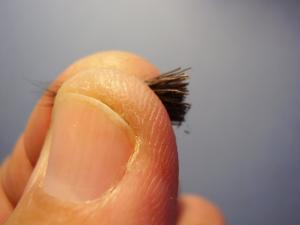
|
See the underfur? |
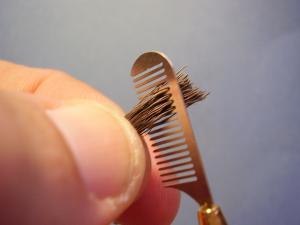
|
Remove the underfur with a fur comb. |
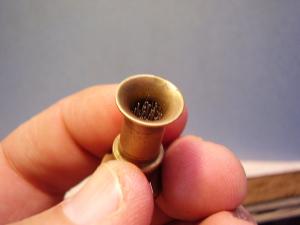
|
Place the hair, tips first, into a midge stacker and tap a few times to even the tips. |
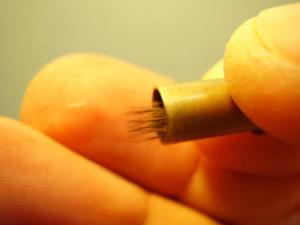
|
Remove the barrel with the tips to the rear of the hook to expose the even hair. |
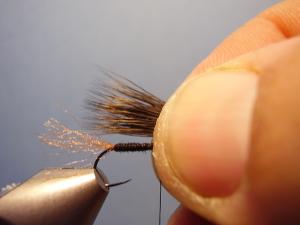
|
Remove the hair and measure for length. The tips should be equal to the length of the hook. |
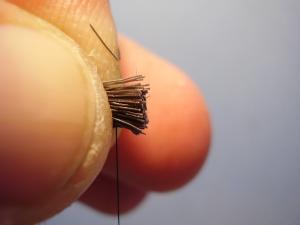
|
Advance the hair to the tie-in location behind the eye. Decide how large you want the head to be and remove the rest of the butt ends, leaving a squared-off section of hair to tie in. |
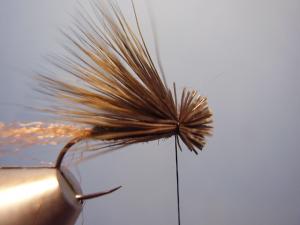
|
Holding the tips, make a loose wrap then a tight wrap around the butt ends at the tie-in location. This will lock down and flare the ends. |
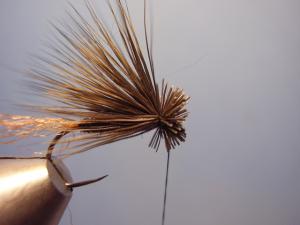
|
Make one more tight wrap forward through the ends. |

|
Pull the ends back and make a wrap around the shank only, just behind the eye. Your hair wing will not roll as so commonly occurs when trying to secure it with stacked wraps at one location. |
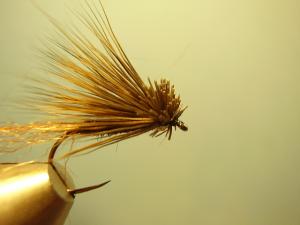
|
Whip and clip. Then dress you your fly by plucking the hook eye (the resultant snap will cause the deer hair to stand up) and removing any misbehaving fibers. |
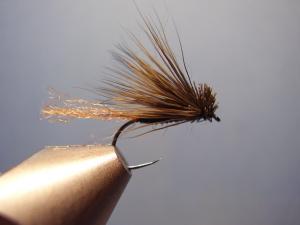
|
A completed Grannom X-Caddis! |
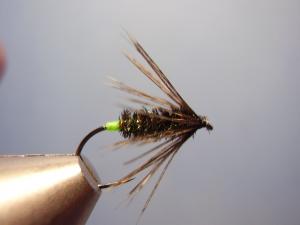
|
This is a perfectly viable soft hackled wet fly tied to imitate an egg-laying female caddisfly. You can tie the same pattern, omitting the egg sac, to imitate an emerging or drowned adult. Often, wet flies are better choices during the peak of a Grannom hatch. Fish it down and across, upstream, or dry/dropper. |


























